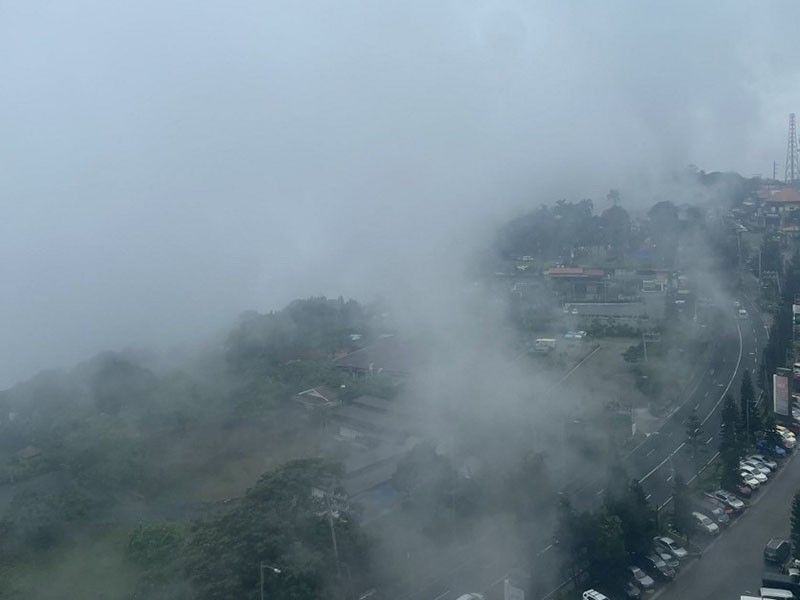
Manila: A small but restive volcano near the Philippine capital, Manila, spewed above-average sulfur dioxide and volcanic smog (vog) on Friday, prompting authorities to close schools in dozens of cities and towns and to urge people to stay indoors. The State Volcanology and Seismology Institute said the steam plumes rising from the Taal volcano’s crater lake were caused by the “upwelling of hot volcanic fluids” in the crater. The vog comprises fine droplets containing volcanic gas like sulfur and can cause some irritation to the eyes, nose, and throat.
The agency warned that the volcano remains unstable. It added that its main crater lake generated the vog, which was seen at least 1.5 kilometers high and hovering to the southwest.
The government warned the smog could affect people with heart problems and asthma, who should remain indoors and keep their medicines nearby. It also urged the public to wear loose clothing, cover their faces, and use an N95 face mask when venturing outside to reduce respiratory discomfort.
A Facebook post by Shayne Tagum Uribe showed the city of Las Pinas enveloped in vog. “The smog is hurtful to the eyes,” she wrote. A YouTube video posted by Ela Centeno Dumanon also shows buildings in the capital region shrouded in haze.
The smog results from a combination of factors such as a thermal inversion, high humidity, calm winds, and dry air from the ongoing dry season. The Philippines is part of the Pacific “Ring of Fire,” where volcanic eruptions are frequent.
In January, Taal spewed a cloud of ash that spread as far as Manila. It prompted the cancellation of flights, forced residents to evacuate, and sparked fears of an imminent eruption.
However, the volcano has been quiet since then, and a volcanic haze has enveloped the island nation.
The Taal volcano is one of the most active in the country. It is located in the province of Batangas, which shares a border with Metro Manila.
Volcanic activity has occurred there for over 3,000 years, with the first recorded eruption in 1572.
Taal is one of the most active volcanoes in the Philippines, which sits on the Pacific’s Ring of Fire, a seismic zone where earthquakes and volcanic eruptions are common.
In January 2020, the Taal spewed a column of ash and steam that reached 15 km (9.32 miles) above sea level and caused hundreds of flight cancellations.
The erupting volcano emits tons of sulfur dioxide and volcanic smog, known as vog. It can be harmful to humans and animals. It can also affect the Earth’s climate.